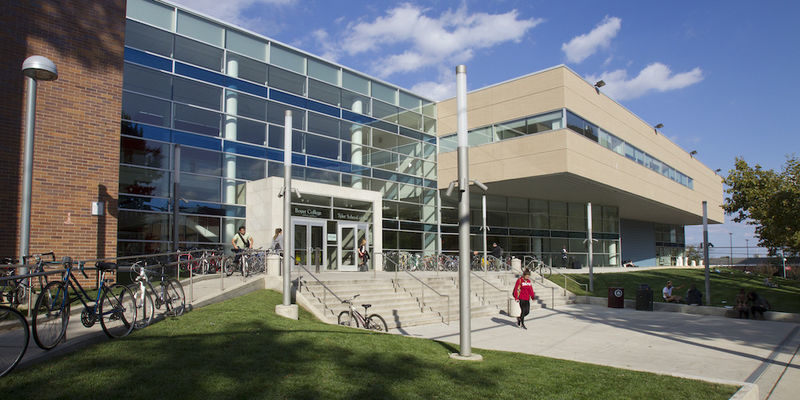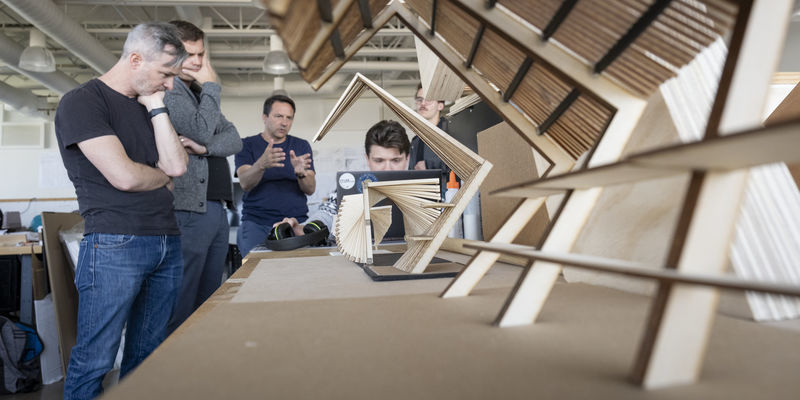Houston, we have a blueprint! Tyler professor’s book explores early NASA infrastructure
Jeffrey Nesbit’s latest book Ground Control examines how the design of NASA facilities and rocket launch complexes shaped the public image of early space exploration.

Aerospace innovations of 1950s and 60s captivated humans around the world, who looked to the sky in wonder and amazement about what it would mean to put a man on the moon. But Jeffrey Nesbit, assistant professor of history and theory of architecture and urbanism at the Tyler School of Art and Architecture, has grown fascinated with the earthbound facilities that helped propel man to the moon.
Why did NASA choose to build sites in Cape Canaveral and Houston? How did rocket engineers safely monitor test launches? How did architects make design decisions in the early days of space exploration, when there weren’t established industry practices? Nesbit explores these themes and many more in his newest book, Ground Control: A Design History of Technical Lands and NASA’s Space Complex.
Published by Routledge on July 24, Ground Control explores the architecture, infrastructure and aesthetics of NASA facilities and rocket launch complexes. The book analyzes how the design of these facilities shaped America’s public image of early space exploration, such as by being designed to appear rationalized and economically efficient to help support public opinion of the rising space programs.
Ground Control focuses on the period between 1950 and 1969, which was full of rapid space complex development, bookended by the first rocket launches at Cape Canaveral in 1950 and the moon landings in July of 1969.
“In the early days, they were launching rockets from temporary sheds, basically. There were no permanent structures,” said Nesbit, a third-year faculty member at Tyler. “That’s where I wanted to begin, to see the evolution of when we moved from wooden sheds into permanent structures, which happened pretty quickly.”
Each chapter focuses on a different architectural or building type found at the facilities in Cape Canaveral, the nearby Kennedy Space Center in Central Florida and Johnson Space Center in Houston. Chapter two, for example, highlights blockhouses, which are concrete bunkers semi-buried in the ground, where engineers sit and are protected from a rocket’s blast during a launch.
Blockhouses were outfitted with periscopes, which were used for viewing a rocket’s blast. Nesbit discovered that the architect who designed the blockhouses was formerly enlisted in the navy and had worked on submarines.
“This architect had experience from a young age working on submarines, then later became contracted to design these blockhouses,” he said. “His go-to references are the things he found familiar, like a periscope out of a submarine, being used for terrestrial equipment. I find it to be a fascinating and peculiar outcome.”
Nesbit himself has shifted his focus from the sea to space facilities. He’s spent more than a decade doing design practice and consultation work for city governments and other large-scale urban places, specifically dealing with issues like sea-level rise and working waterfronts. He worked on abandoned naval shipyards before becoming interested in NASA and space ports.
His research often centers on technical lands, which is the study of architecture and infrastructure in places that we can’t access, or that are out of reach, remote or distant. As such, very few people in the architecture, urban design and city planning fields have examined earthbound space facilities the way Nesbit does in Ground Control.
“Often these spaces are dismissed, as though they are engineering sites and have nothing to do with architects and design,” he said.
But Nesbit found that’s not quite the case. Another chapter looks closely at early Cape Canaveral facilities inspired by southern California aircraft hangars. These buildings, from the outside, looked like they were designed and built for airplanes. But the staff at Cape Canaveral quickly began adapting the inside for space exploration uses.
In one Cape Canaveral hangar, half of the building is devoted to astronaut living quarters, while the other half contains machines and equipment used for the construction of rockets and astronaut training.
“You have this anonymous looking industrial hangar, and yet the interior is completely hyper technologically savvy,” Nesbit said. “That’s a fascinating outcome when you really start digging in and looking past the superficiality of the exterior shell.”
Nesbit spent seven years researching and writing the book, during which time he dove into archival records, spoke to space historians, flight directors and other NASA personnel, and made visits to the sites analyzed in the book.
“These places are often inaccessible to the public—some of the sites are partly contaminated and restrictive access,” he said. “The purpose of going to the sites was to get a sense of the deterioration of some of the facilities that are abandoned, or, in some cases I’m going to facilities that are scheduled for demolition, so getting to the buildings before they come down.”
Nesbit relied on the Freedom of Information Act to access documents that shed fascinating light on some of the decisions made at the time. Now-declassified documents from the Air Force describe the military’s rationale for determining where launch sites should be located.
“That was actually really interesting because we just assume that Central Florida was always the place where they were going to be launching rockets, but in actuality they were questioning other sites—Alaska was one,” he said.
Nesbit hopes to continue researching launch facilities, and his interest has recently turned to the private space exploration industry, which includes companies like SpaceX. Many of these companies are utilizing existing infrastructure. Others are building new facilities, like SpaceX’s new launch facility in Boca Chica, Texas.
“They’re learning the hard way, again, about how to build these launch pads and facilities,” Nesbit said. “So I’ve been out on those sites and maybe will be looking at those a little more closely in the future.”
Ground Control can be purchased at a discount through the publisher’s website using the promo code AFLY03. The book is also available at typical booksellers like Amazon and Barnes and Noble.
Visit Nesbit’s website to learn more about his other publications.


